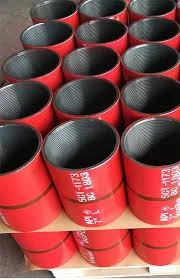- Afrikaans
- Albanian
- Amharic
- Arabic
- Armenian
- Azerbaijani
- Basque
- Belarusian
- Bengali
- Bosnian
- Bulgarian
- Catalan
- Cebuano
- Corsican
- Croatian
- Czech
- Danish
- Dutch
- English
- Esperanto
- Estonian
- Finnish
- French
- Frisian
- Galician
- Georgian
- German
- Greek
- Gujarati
- Haitian Creole
- hausa
- hawaiian
- Hebrew
- Hindi
- Miao
- Hungarian
- Icelandic
- igbo
- Indonesian
- irish
- Italian
- Japanese
- Javanese
- Kannada
- kazakh
- Khmer
- Rwandese
- Korean
- Kurdish
- Kyrgyz
- Lao
- Latin
- Latvian
- Lithuanian
- Luxembourgish
- Macedonian
- Malgashi
- Malay
- Malayalam
- Maltese
- Maori
- Marathi
- Mongolian
- Myanmar
- Nepali
- Norwegian
- Norwegian
- Occitan
- Pashto
- Persian
- Polish
- Portuguese
- Punjabi
- Romanian
- Russian
- Samoan
- Scottish Gaelic
- Serbian
- Sesotho
- Shona
- Sindhi
- Sinhala
- Slovak
- Slovenian
- Somali
- Spanish
- Sundanese
- Swahili
- Swedish
- Tagalog
- Tajik
- Tamil
- Tatar
- Telugu
- Thai
- Turkish
- Turkmen
- Ukrainian
- Urdu
- Uighur
- Uzbek
- Vietnamese
- Welsh
- Bantu
- Yiddish
- Yoruba
- Zulu
Understanding Tubing Collars and Their Role in Oil and Gas Operations
Understanding Tubing Collars in Oil and Gas Operations
In the oil and gas industry, efficient resource extraction is paramount, and one critical component that plays an essential role in ensuring the integrity and functionality of drilling operations is the tubing collar. Tubing collars are designed to connect sections of tubing and play a crucial role in the overall stability and performance of well operations. This article delves into the purpose, types, and significance of tubing collars in the oil and gas sector.
What is a Tubing Collar?
A tubing collar is a mechanical device used to connect pipeline sections, particularly in oil and gas wells. It serves as a junction that allows for the joining of multiple tubing strings, ensuring a seamless flow of hydrocarbons from the reservoir to the surface. The primary function of a tubing collar is to provide structural integrity to the well while accommodating pressure changes and thermal expansions that occur during production operations.
Types of Tubing Collars
There are various types of tubing collars used in the oil and gas industry, each designed for specific applications
1. Tapered Collars These collars gradually decrease in diameter and are used to facilitate a smooth transition between different tubing sizes. They help in reducing turbulence and optimizing flow rates within the well.
2. Standard Collars These are uniformly sized collars that are commonly used for general connection purposes. They provide a reliable joint between two tubing sections, ensuring stability and pressure containment.
3. Specialty Collars These are custom-designed collars tailored for unique drilling conditions or specific well designs. They may have added features such as valves or flow control mechanisms to enhance performance in challenging environments.
tubing collar

4. Collars with External Coating Some collars come with protective coatings to resist corrosion and wear, especially in harsh environments where chemical exposure is a concern. These coatings enhance the longevity and reliability of the collars.
Significance of Tubing Collars
The importance of tubing collars cannot be overstated. They contribute to the overall safety and efficiency of drilling operations in several ways
- Pressure Containment Tubing collars are designed to withstand high-pressure conditions that are typical in oil and gas wells. Their robust construction ensures that fluids and gases do not escape, which is crucial for maintaining well integrity and preventing blowouts.
- Facilitating Flow Properly designed collars ensure efficient fluid flow within the tubing. They minimize obstructions, thereby optimizing production rates and enhancing the overall efficiency of the well.
- Load Distribution Tubing collars help distribute mechanical loads along the tubing string, reducing the risk of failure due to bending or tension. This is particularly important in deep wells where high loads can lead to structural issues.
- Ease of Maintenance Collars are designed for ease of installation and removal, making it simpler to conduct maintenance operations. This reduces downtime and operational costs, allowing for more efficient resource extraction.
Conclusion
In conclusion, tubing collars are vital components in the oil and gas drilling process, providing essential support in connecting tubing sections while ensuring the integrity and efficiency of well operations. Their various types cater to the diverse needs of the industry, enhancing safety, optimizing fluid flow, and facilitating maintenance. As the oil and gas industry continues to evolve, innovations in tubing collar designs will play a pivotal role in meeting the challenges of resource extraction in increasingly complex and challenging environments. Understanding the function and significance of tubing collars is crucial for professionals in the sector, as it contributes to the overall success of drilling activities and the sustainability of energy resources.
-
Tubing Pup Joints: Essential Components for Oil and Gas OperationsNewsJul.10,2025
-
Pup Joints: Essential Components for Reliable Drilling OperationsNewsJul.10,2025
-
Pipe Couplings: Connecting Your World EfficientlyNewsJul.10,2025
-
Mastering Oilfield Operations with Quality Tubing and CasingNewsJul.10,2025
-
High-Quality Casing Couplings for Every NeedNewsJul.10,2025
-
Boost Your Drilling Efficiency with Premium Crossover Tools & Seating NipplesNewsJul.10,2025







